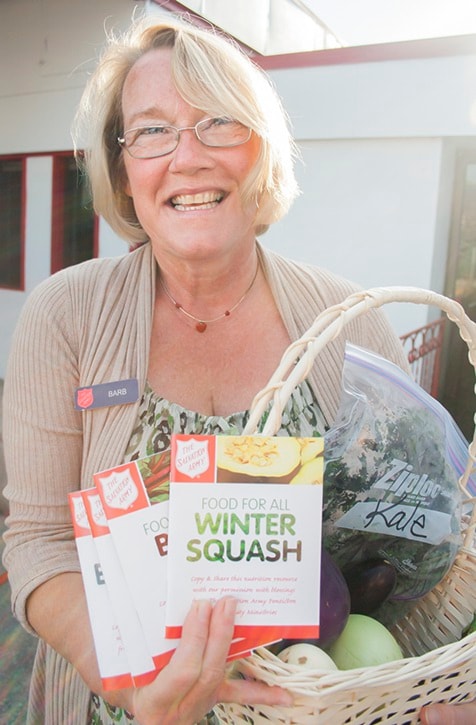The Salvation Army Food Bank has gone into the publishing business, albeit in a very small, though fresh way.
With the help of Food Banks Canada and a $6,000 grant from Campbell’s, the Food Bank has just finished preparing five small books on how to handle some of the more exotic vegetables that come through their doors.
“Allegra Printing did a really beautiful job and gave us a little bit of colour to make them really stand out. One little book per veggie,” said Barb Stewart, program co-ordinator at the Salvation Army.
The project began when Stewart asked 500 food bank clients about which vegetables they didn’t know what to do with, or weren’t comfortable with preparing and cooking.
What came out of that was a list of veggies that are often found in abundance at the food bank, either from donors’ gardens or their own community garden: squashes, beets, eggplant, kale, parsnips.
These aren’t just cookbooks, according to Stewart. While the books do include a few recipes, their information covers the nutritional content of vegetables and how to select, store, clean and preserve them.
“It’s in keeping with the whole idea of helping people to store a little bit away for the winter, helping people to be able to be mindful of eating for nutrition rather than eating just to satisfy hunger, and to be able to help people use what is here at the food bank,” said Stewart.
“Our food bank is getting a lot more into education over the last three years with the community kitchen and the community gardens.”
The books even include information on how to grow the vegetables, to encourage people to try gardening on their balcony or whatever space they have.
“That is certainly what we are promoting at the community garden site we have going. We engage food bank clients to come work at the community garden site, then the produce comes to the food bank,” said Stewart.
Creating the books was a team effort according to Stewart, starting with a committee gathering feedback from food bank clients.
“That’s where suggestions on including preservation, selection and storage came from,” said Stewart. “And then we put out a call for recipes. We just wanted to keep it all grounded in what we heard from the people that come to the food bank.”
Choosing the recipes to include was also a thorough process, making good use of the Salvation Army’s community kitchen. It was there that they prepared the recipes and cut them up into as many as 150 samples to hand out in the food bank foyer.
“We got feedback on which recipes people like the most from all the food bank clients that came through,” said Stewart. “Those were big days. We did a separate day for each of the foods. It was huge preparing all of these in the community kitchen and cutting up little samples. It was a real team effort.”
Stewart said they hope to find financial sponsorship to continue preparing more of the guide books, furthering their cause of educating people about how to prepare nutritious meals.
